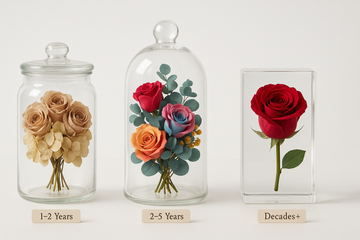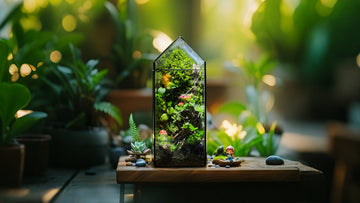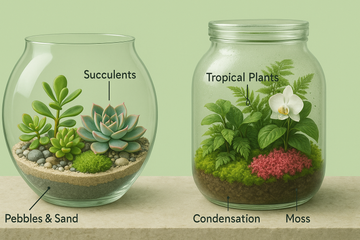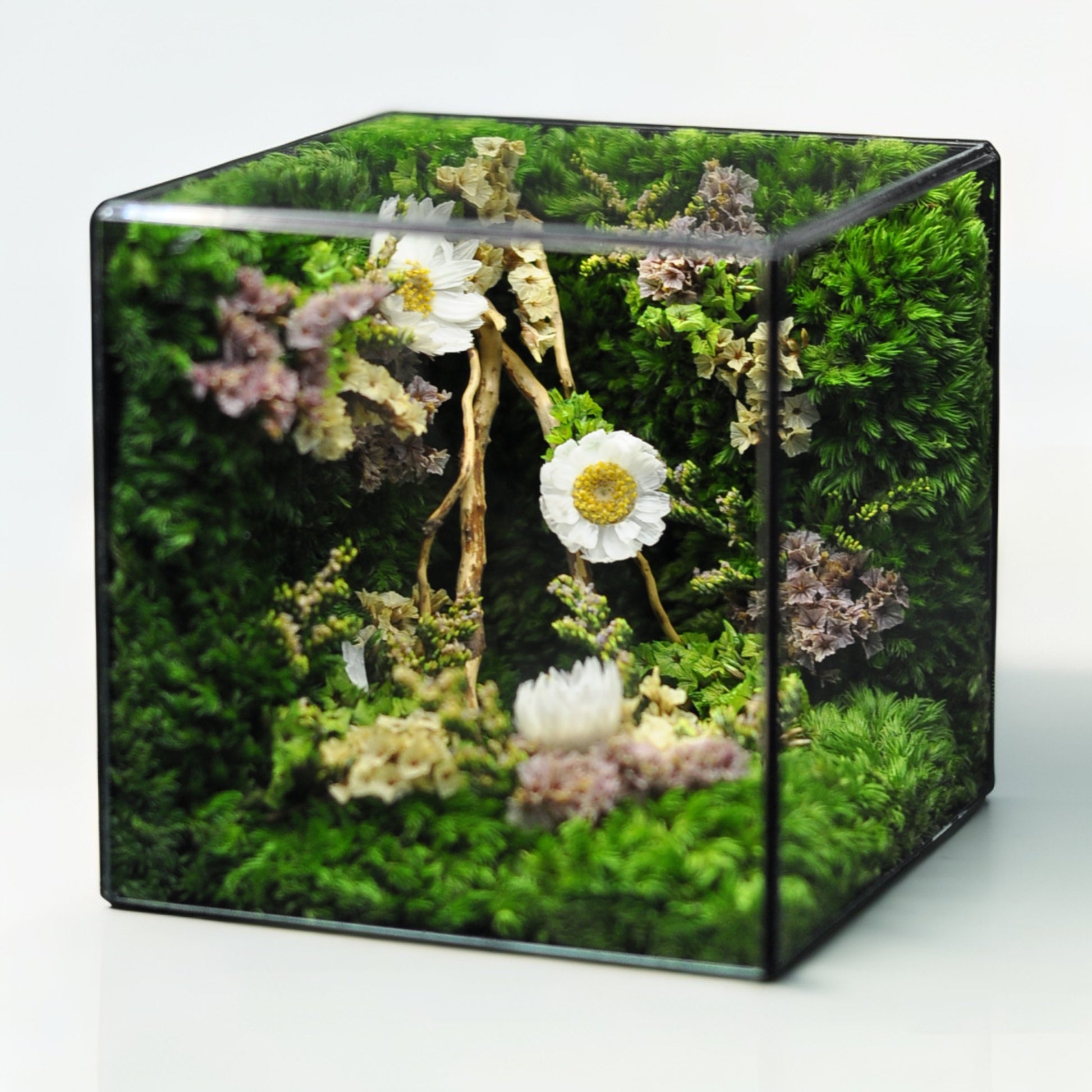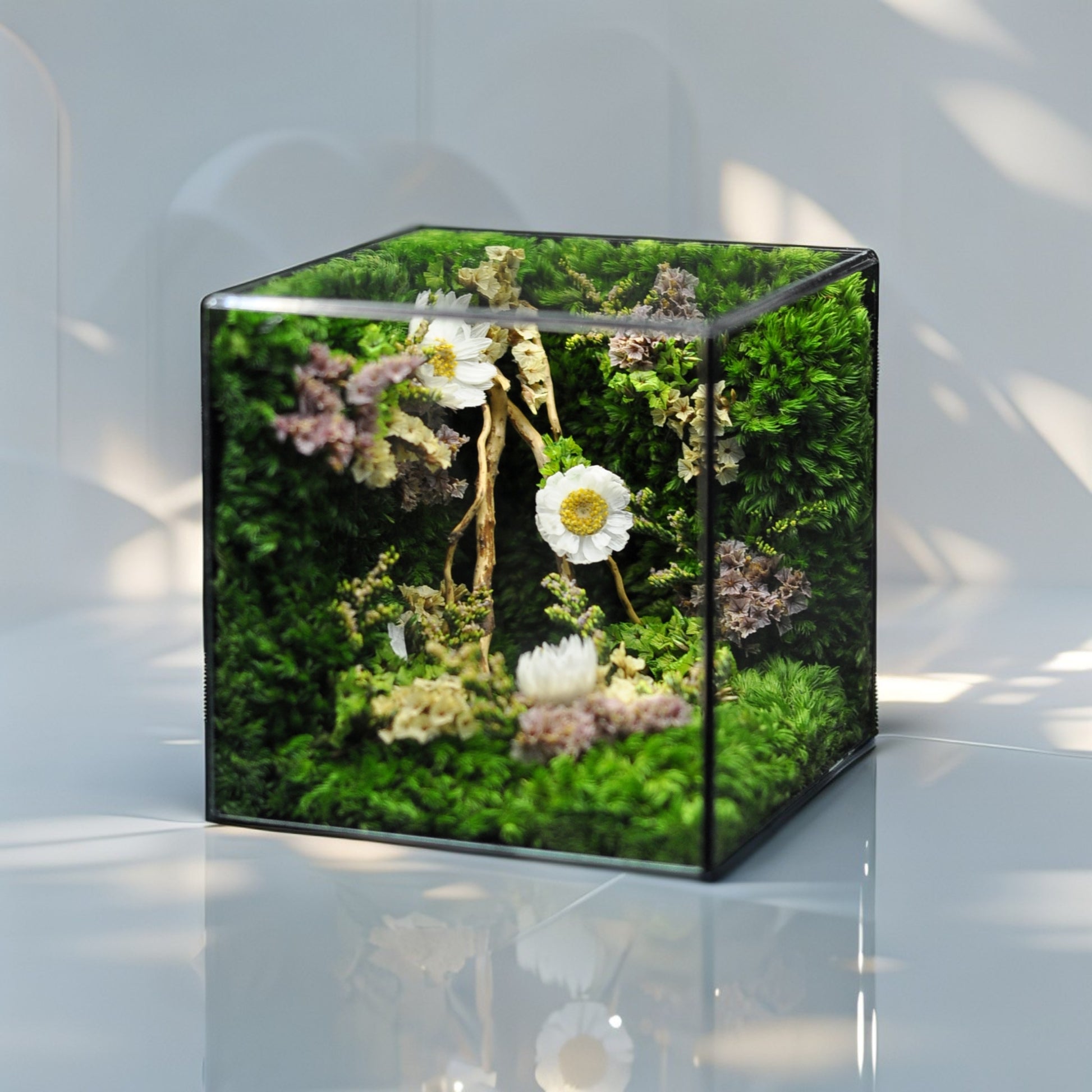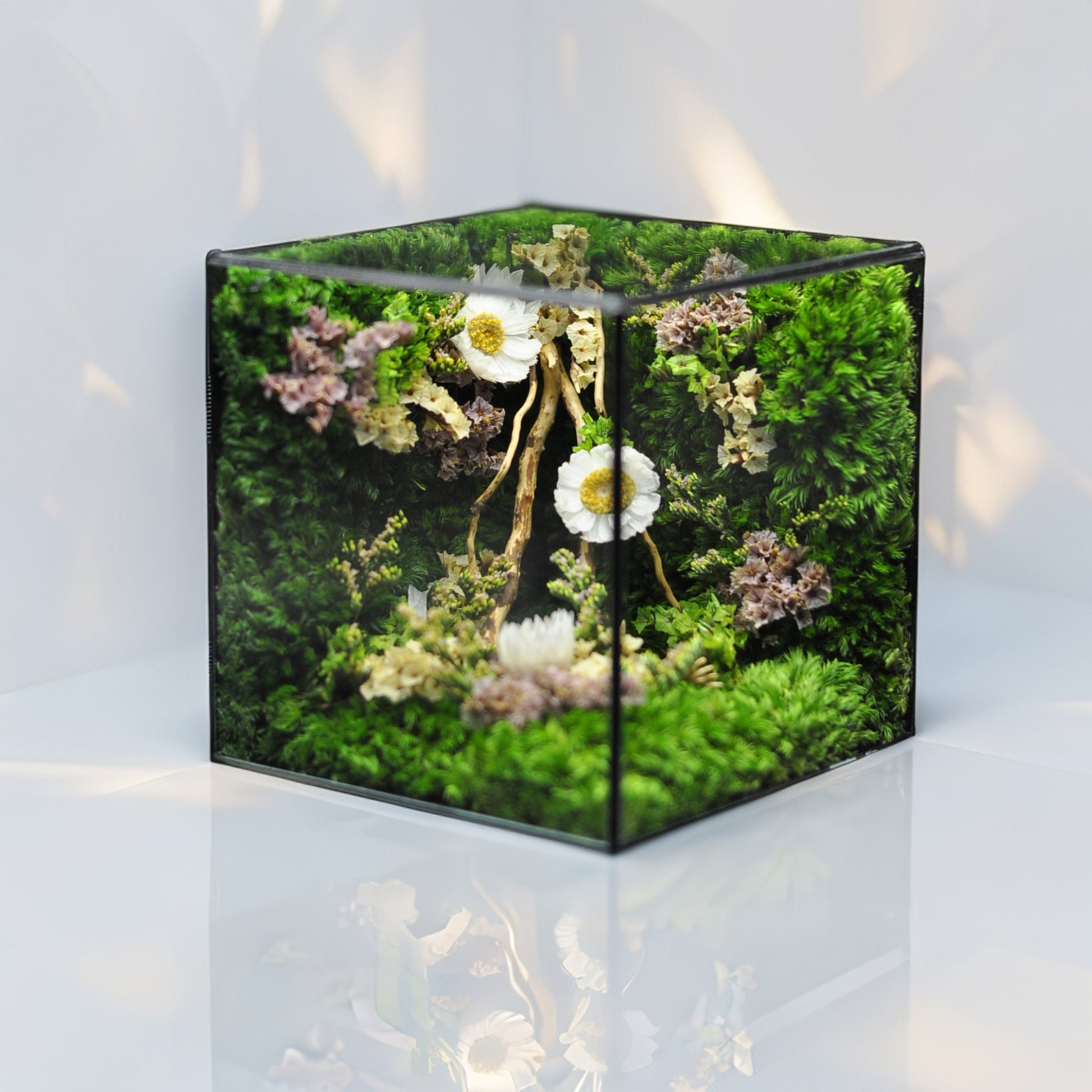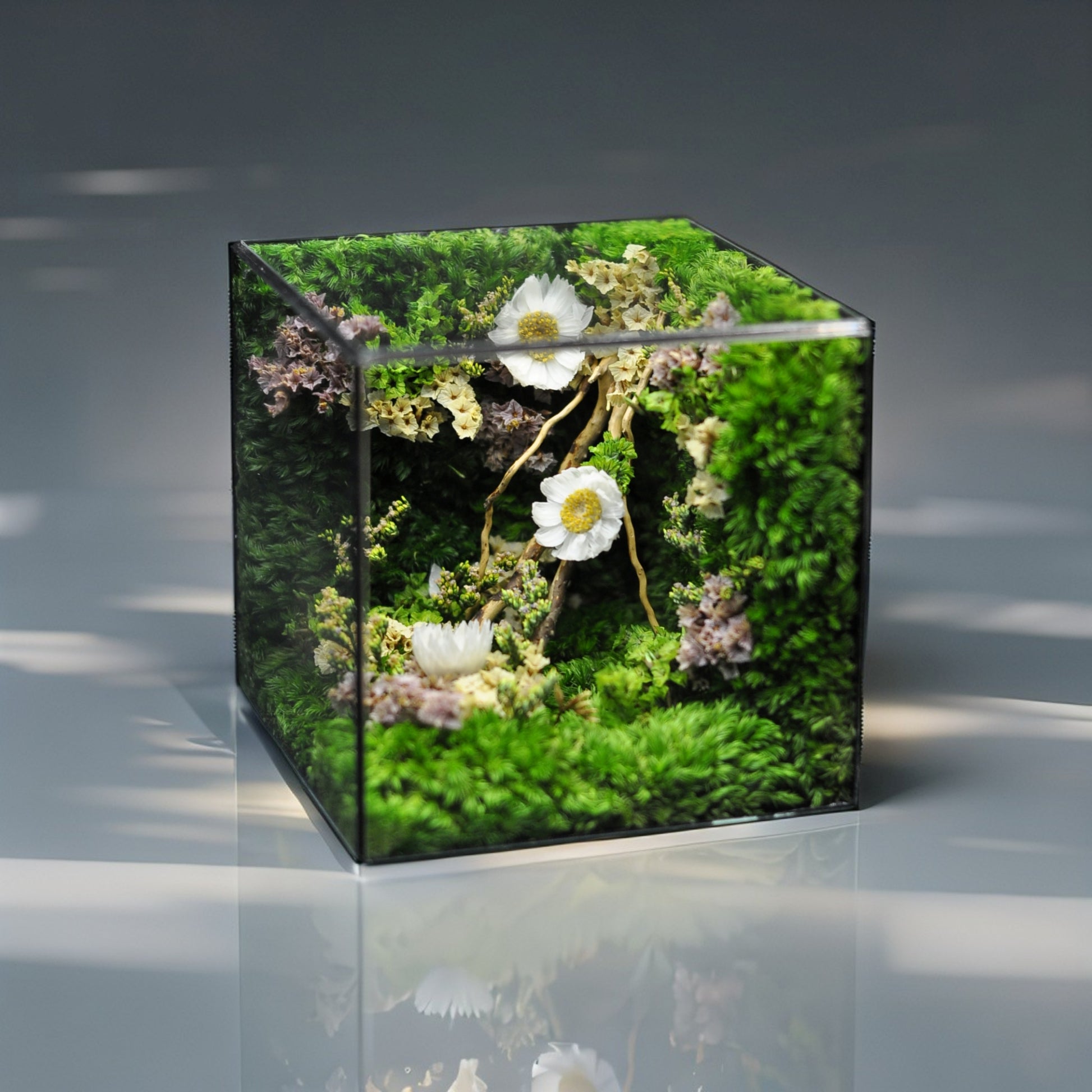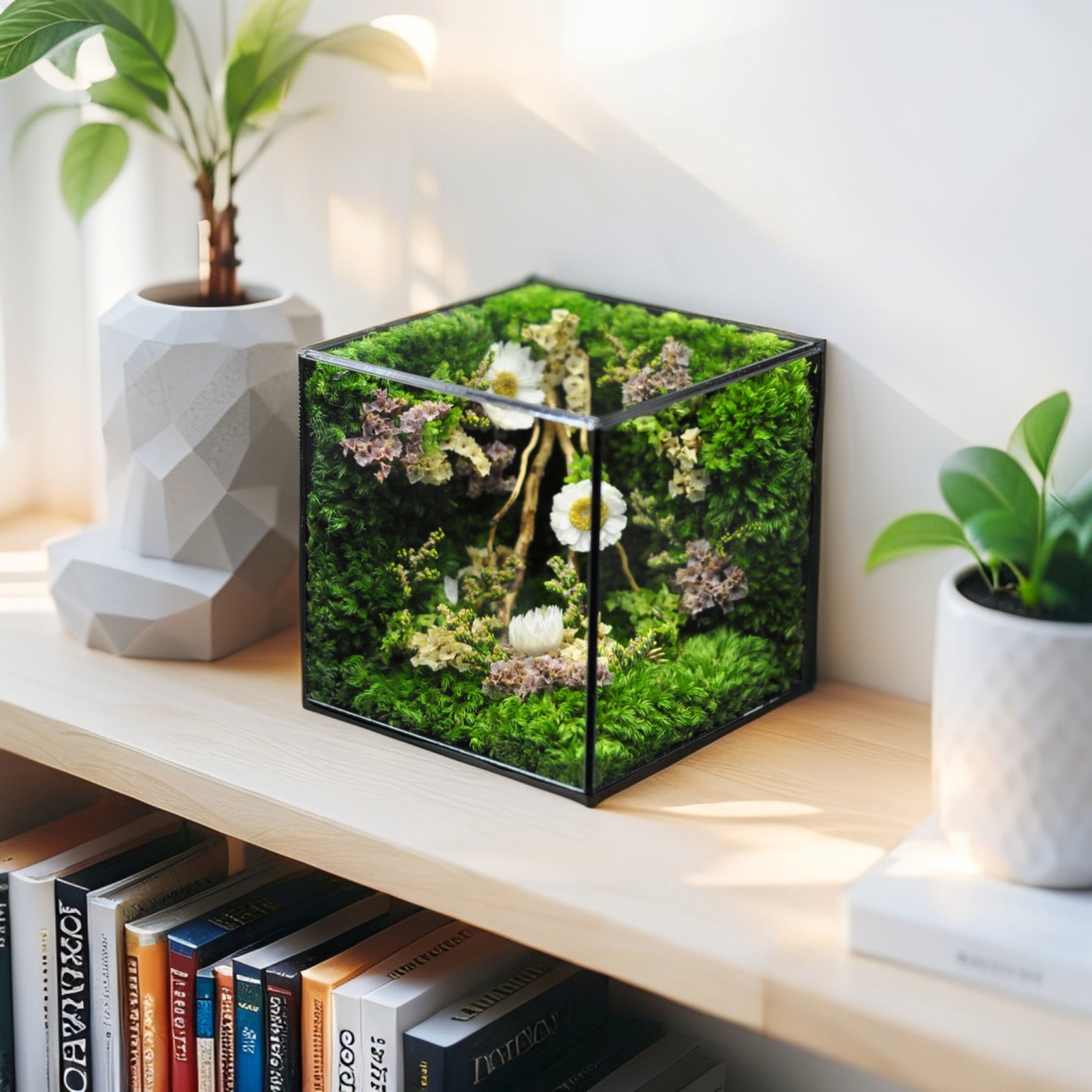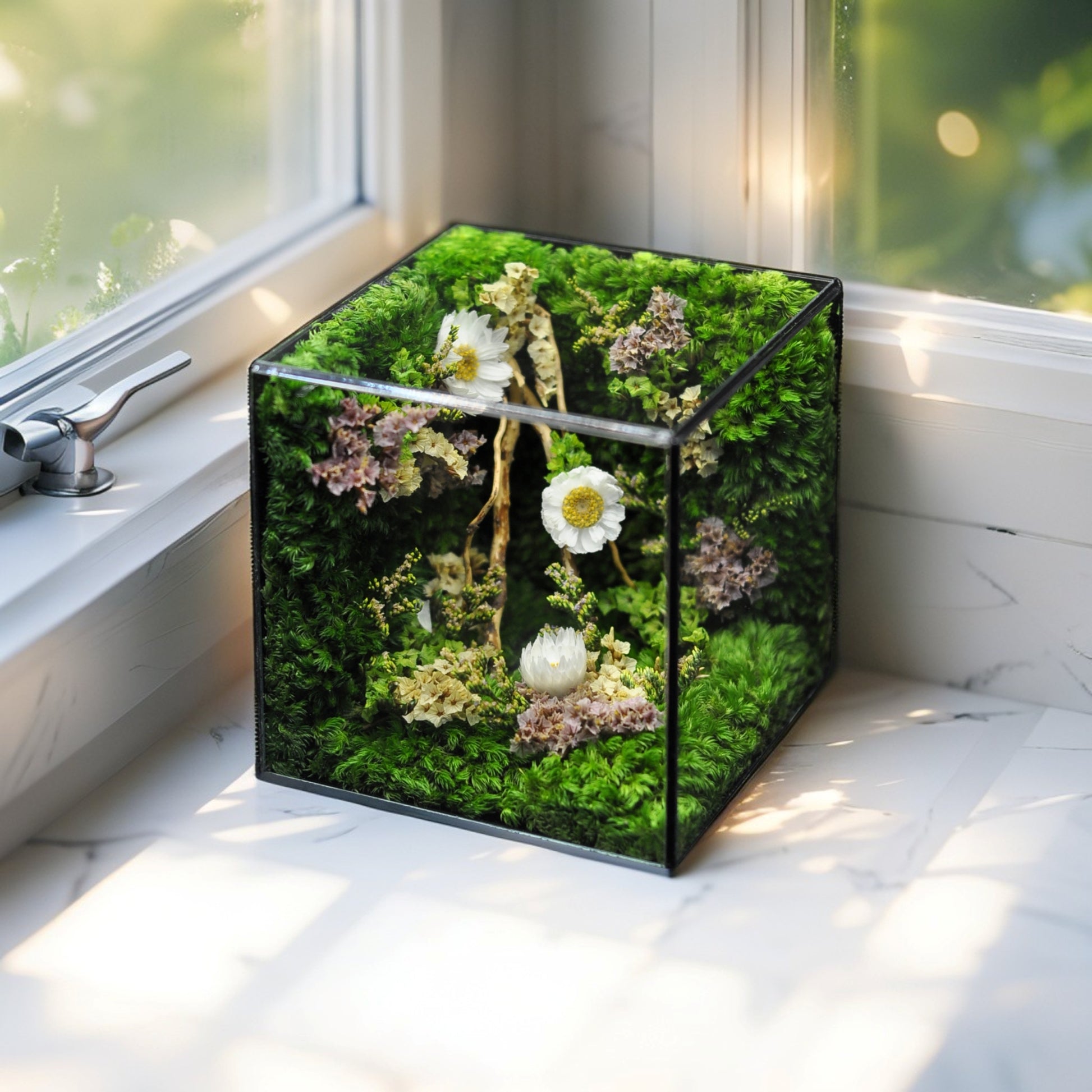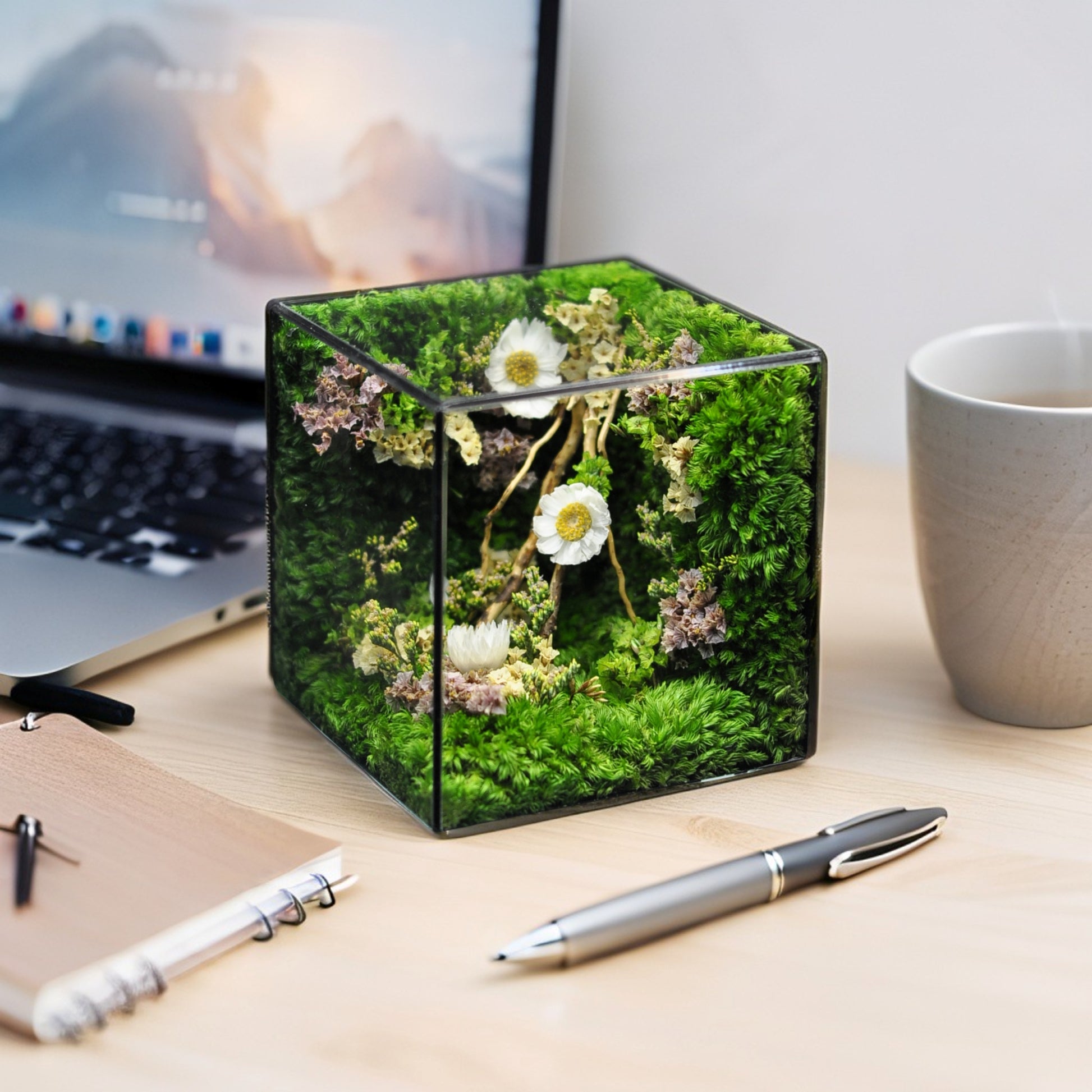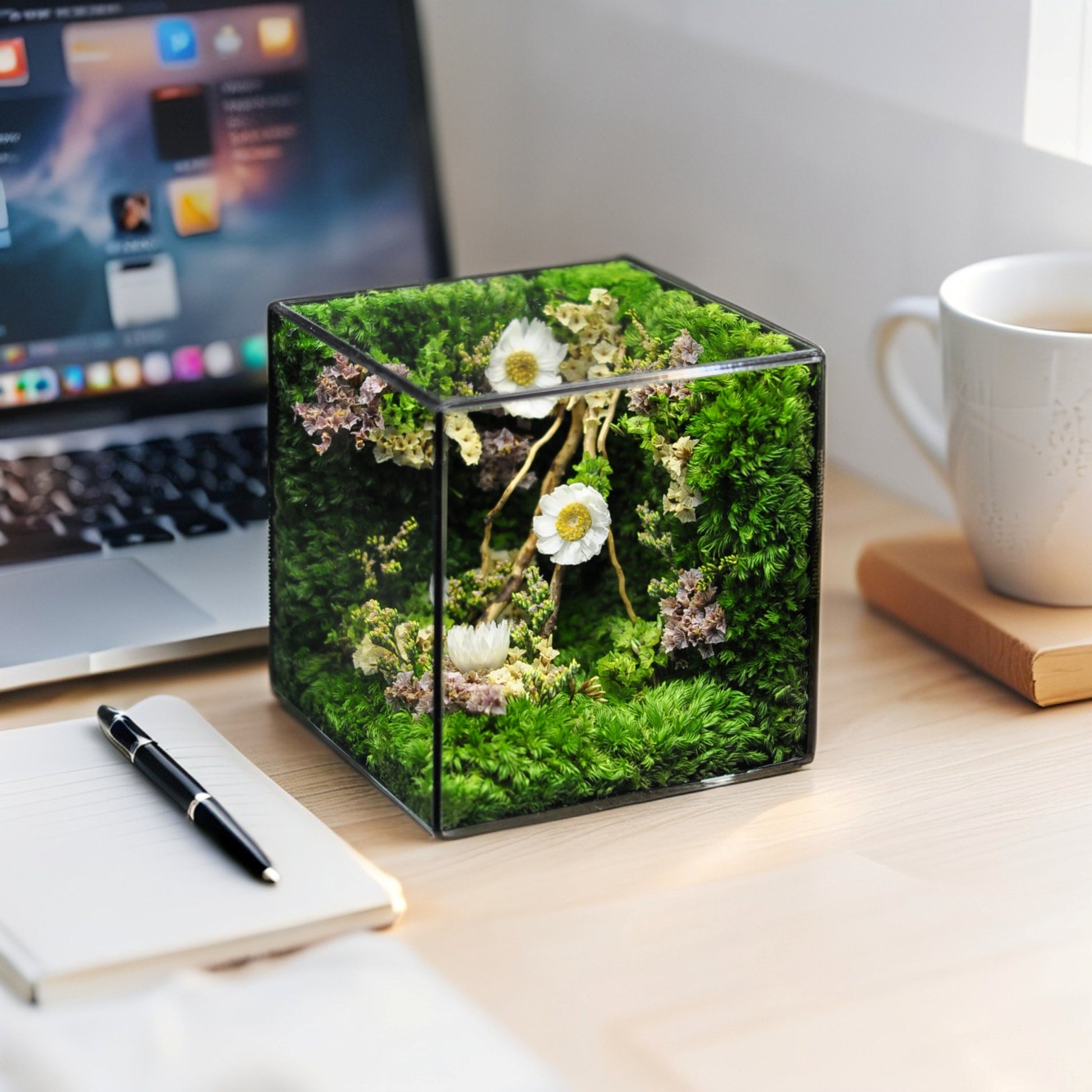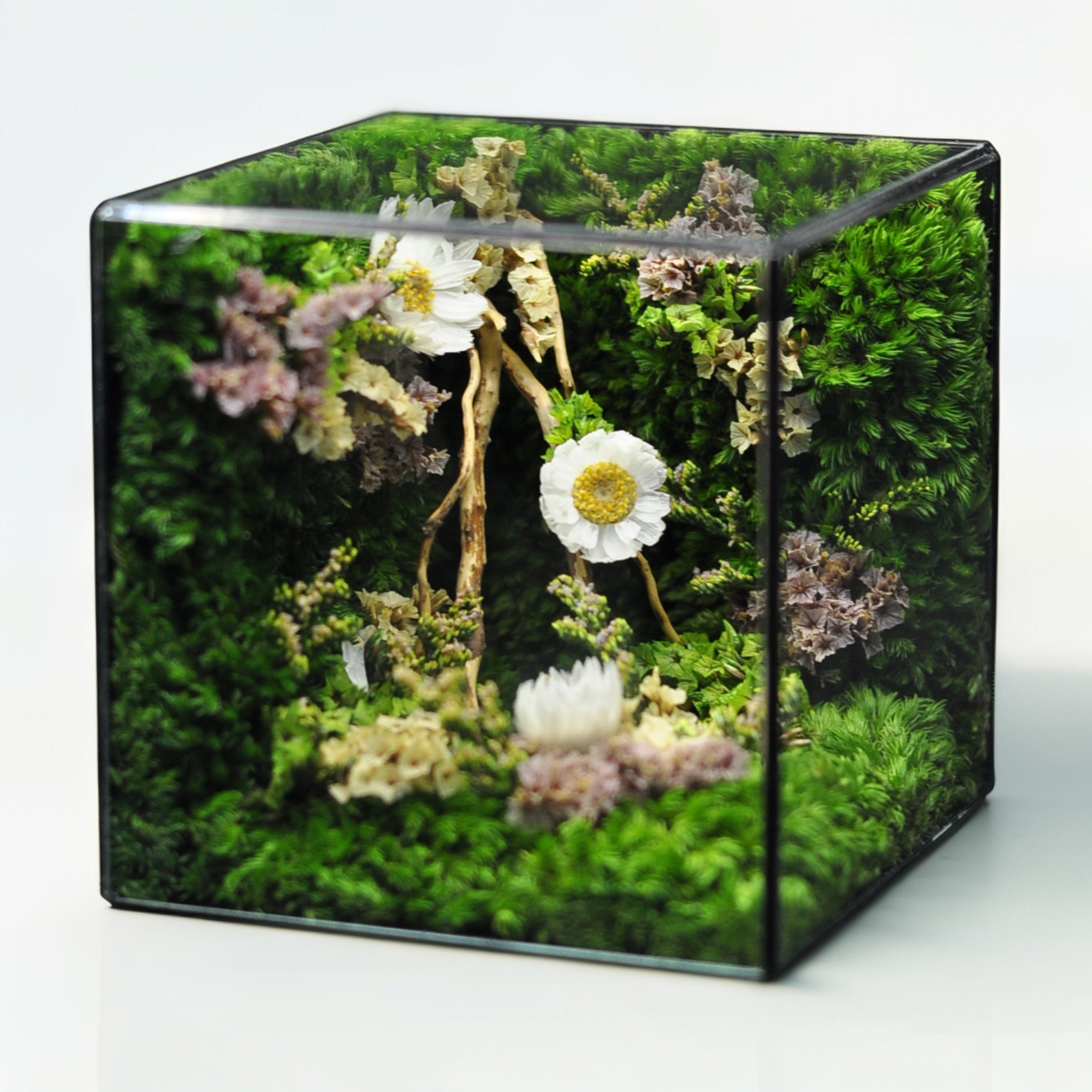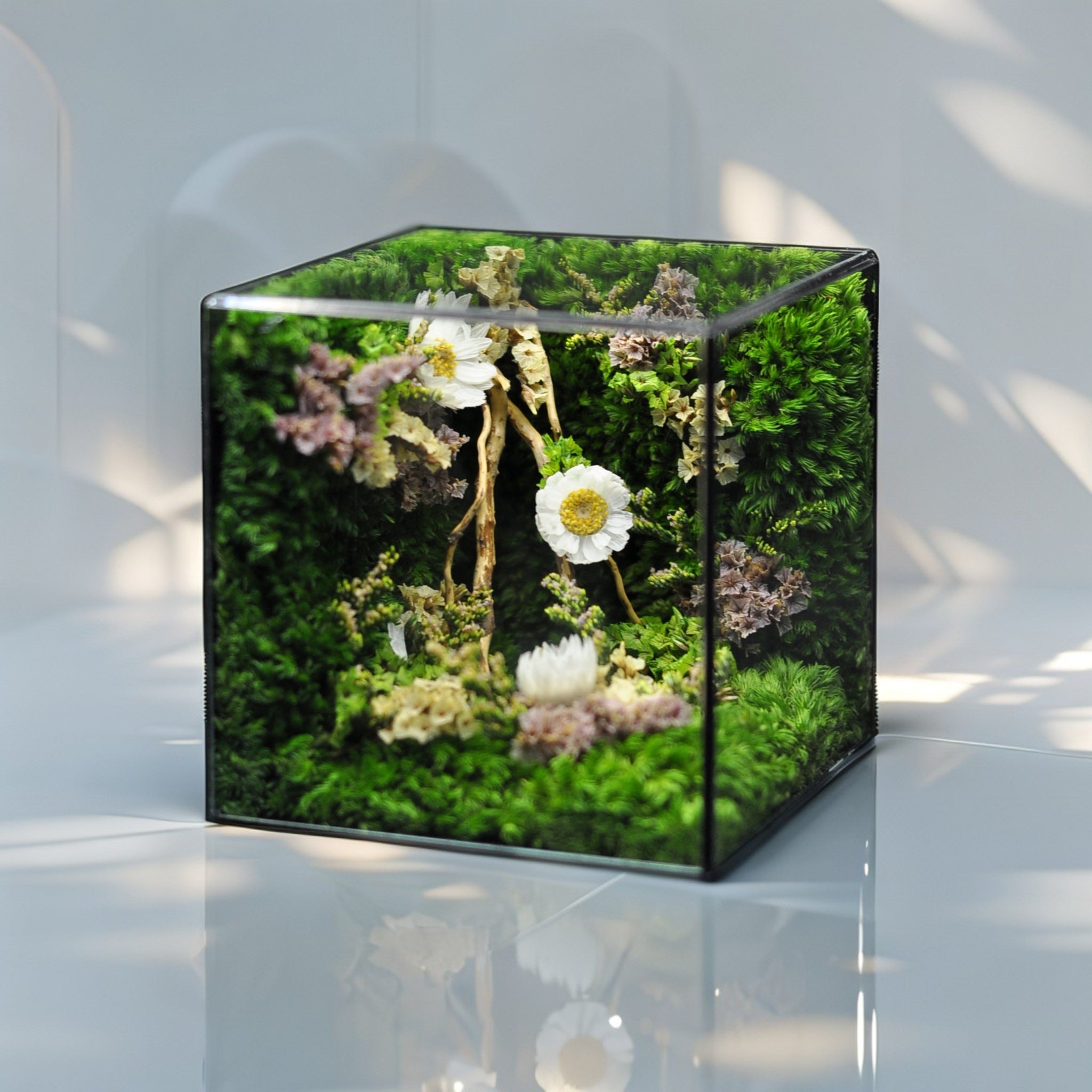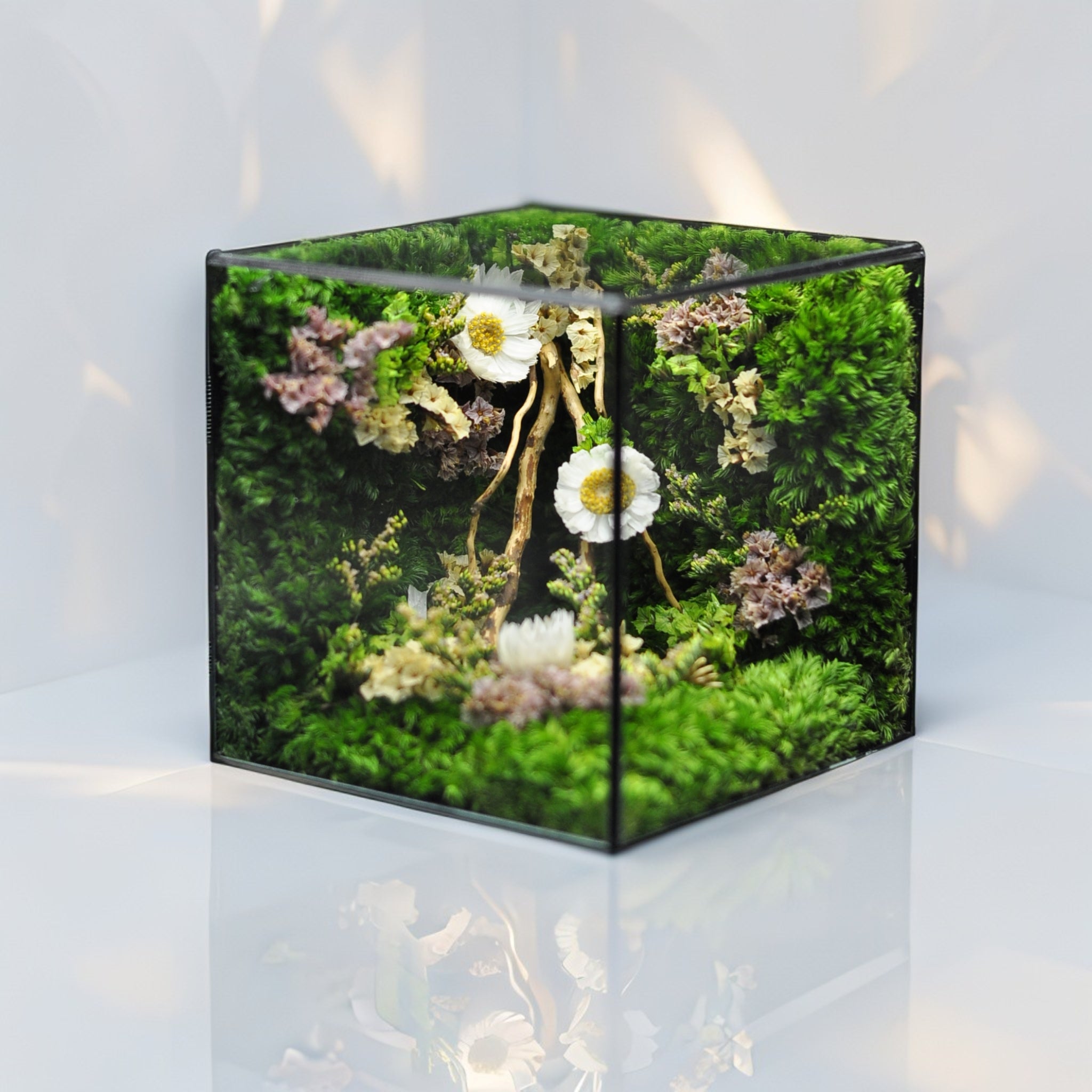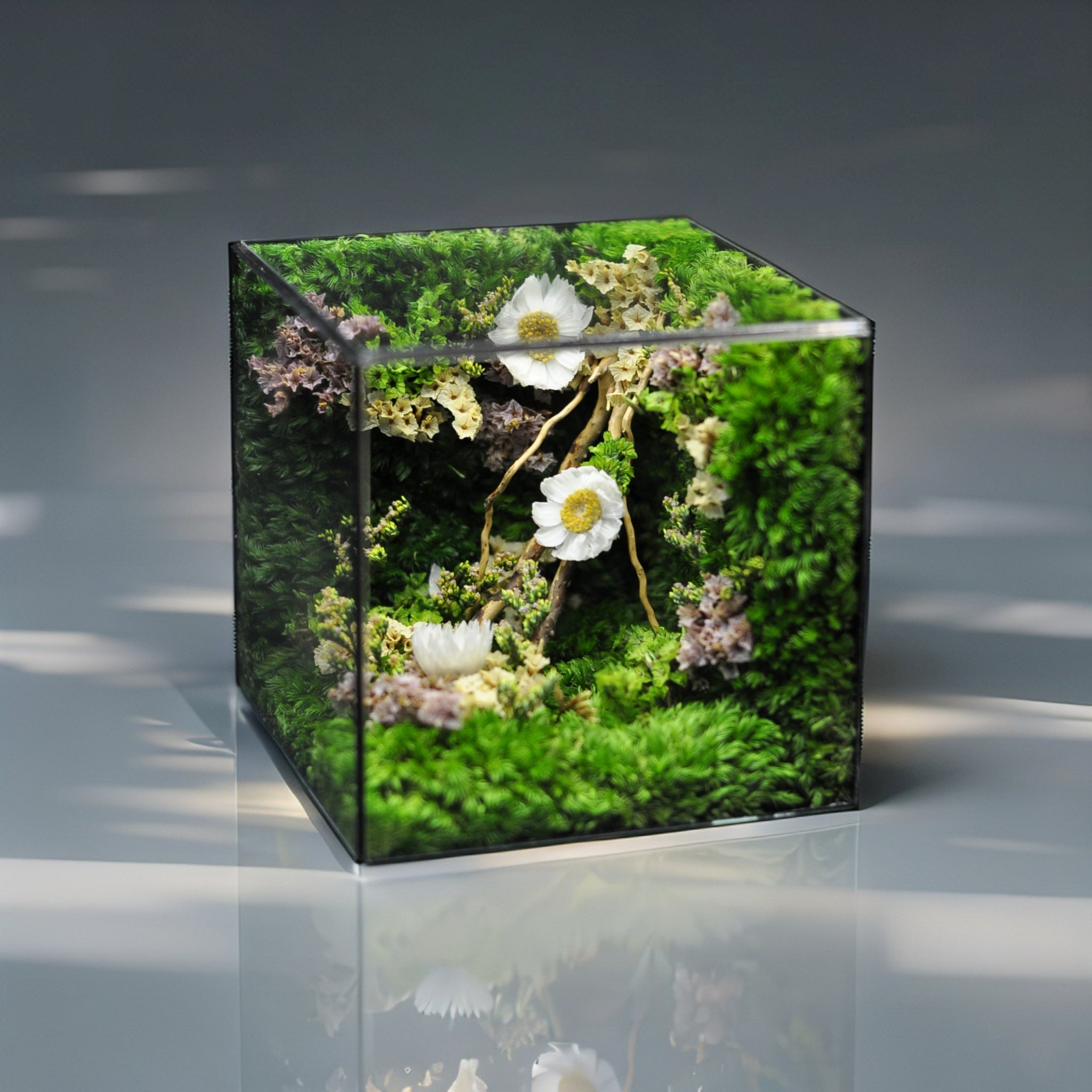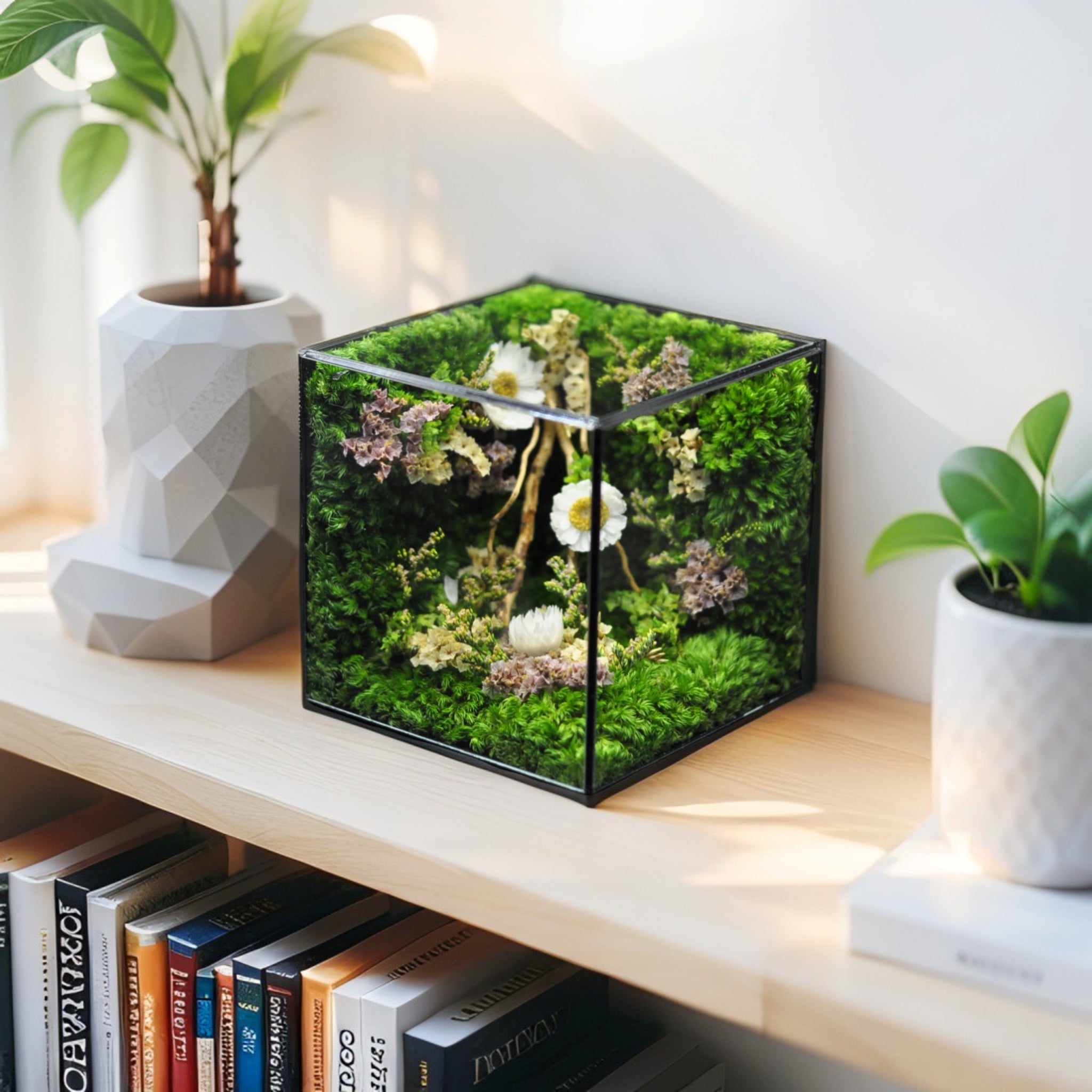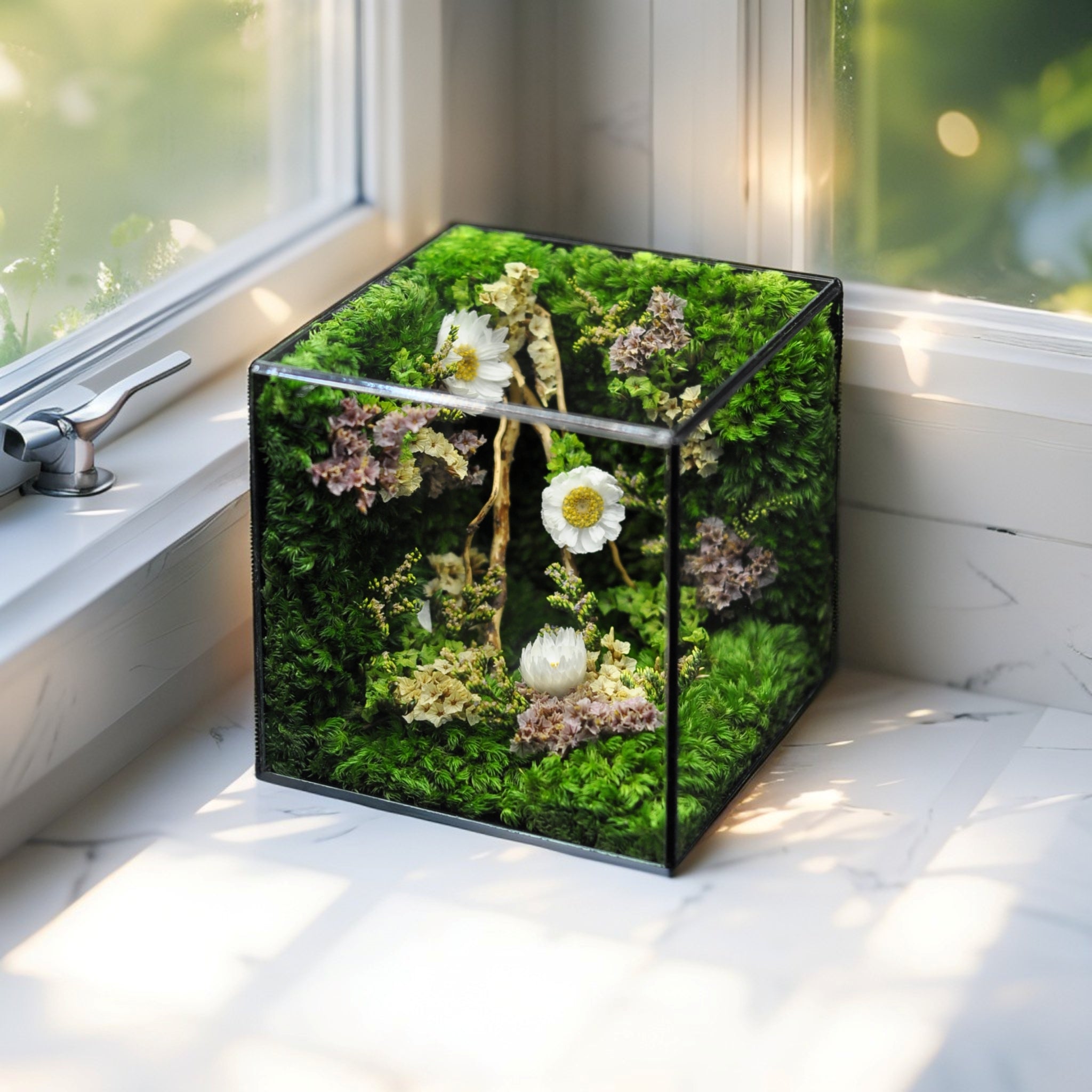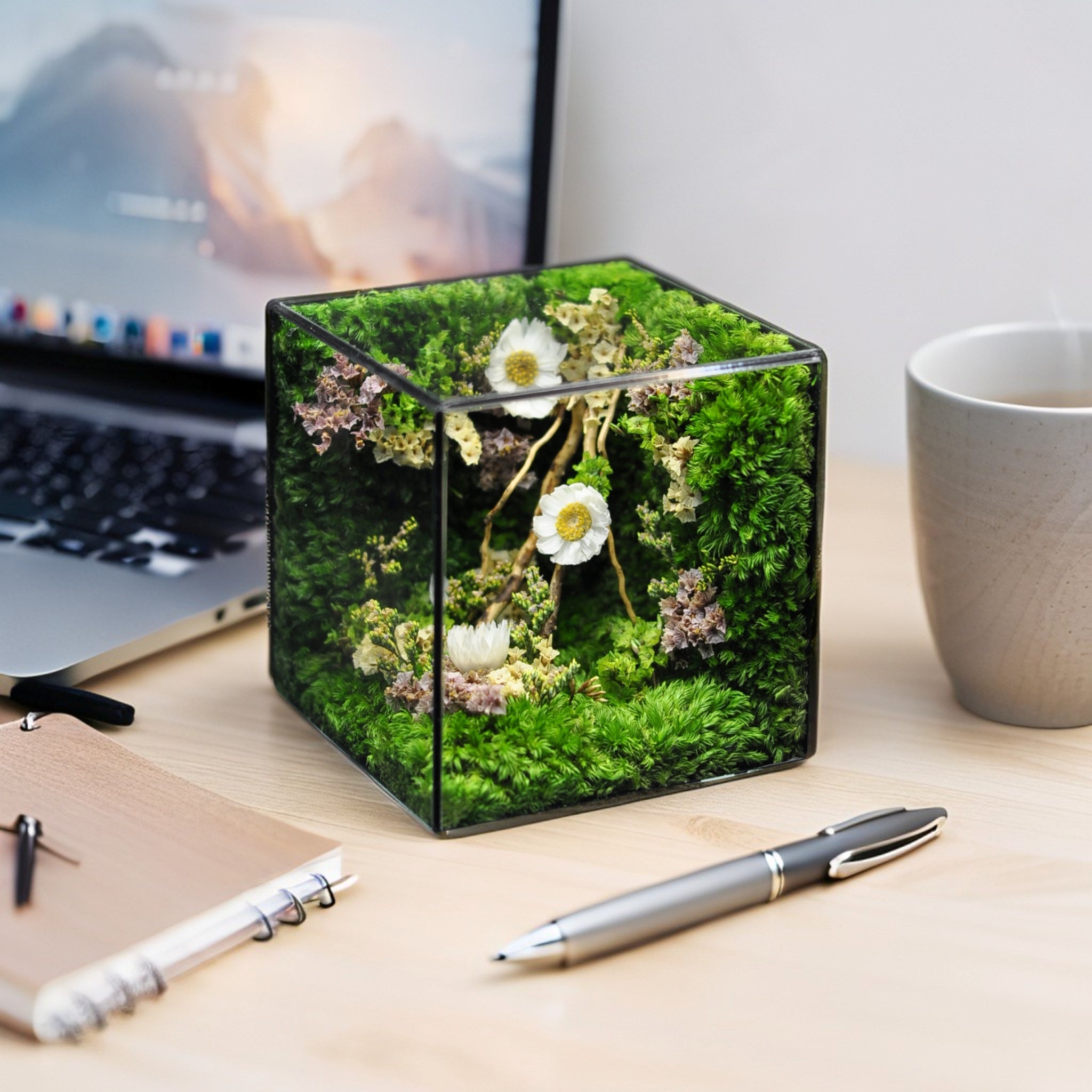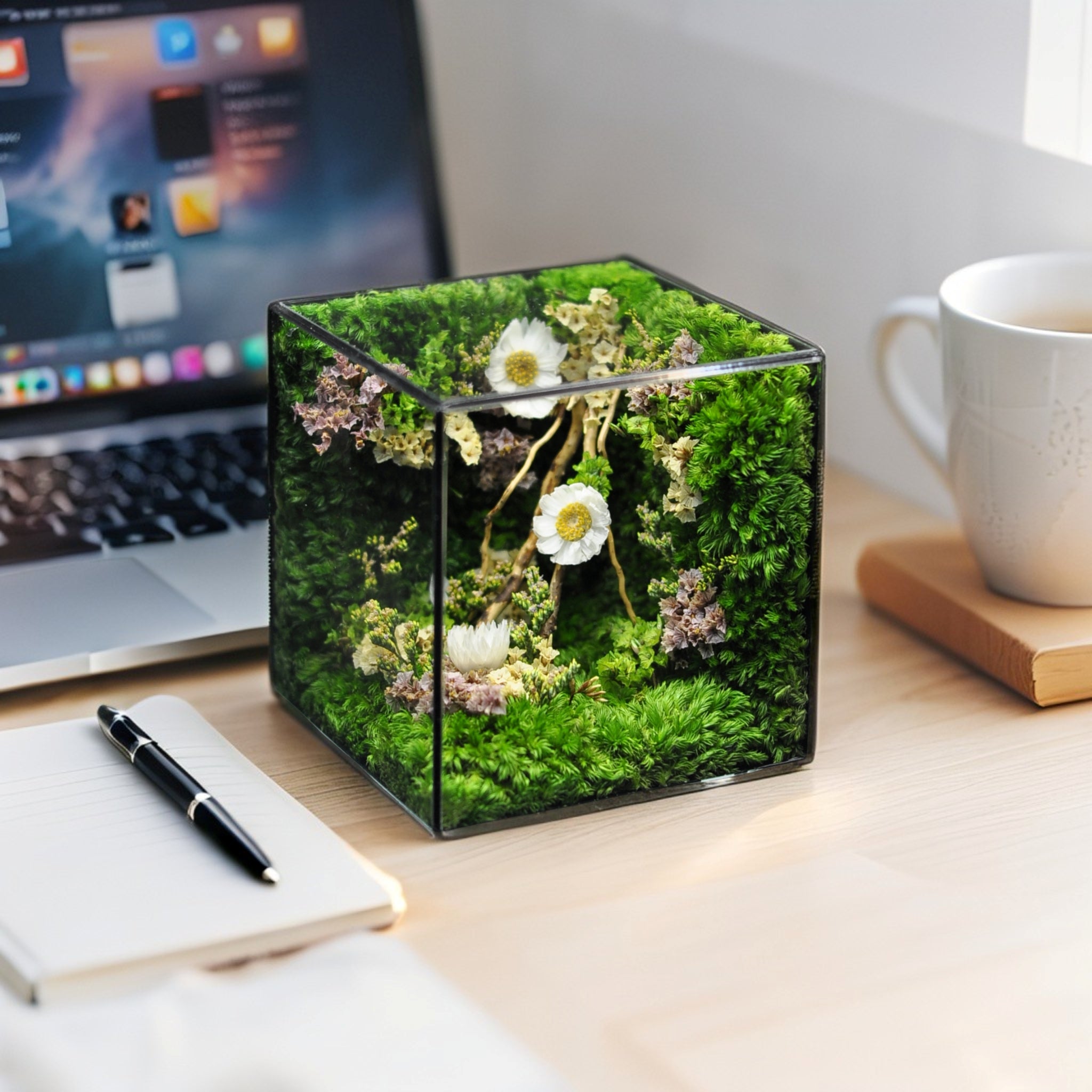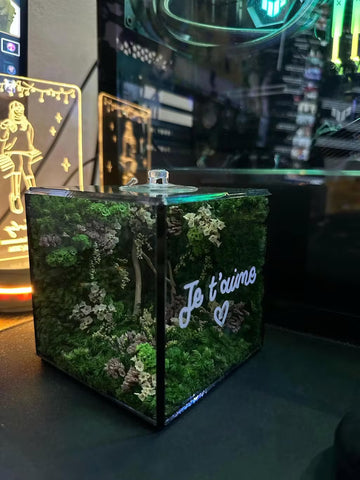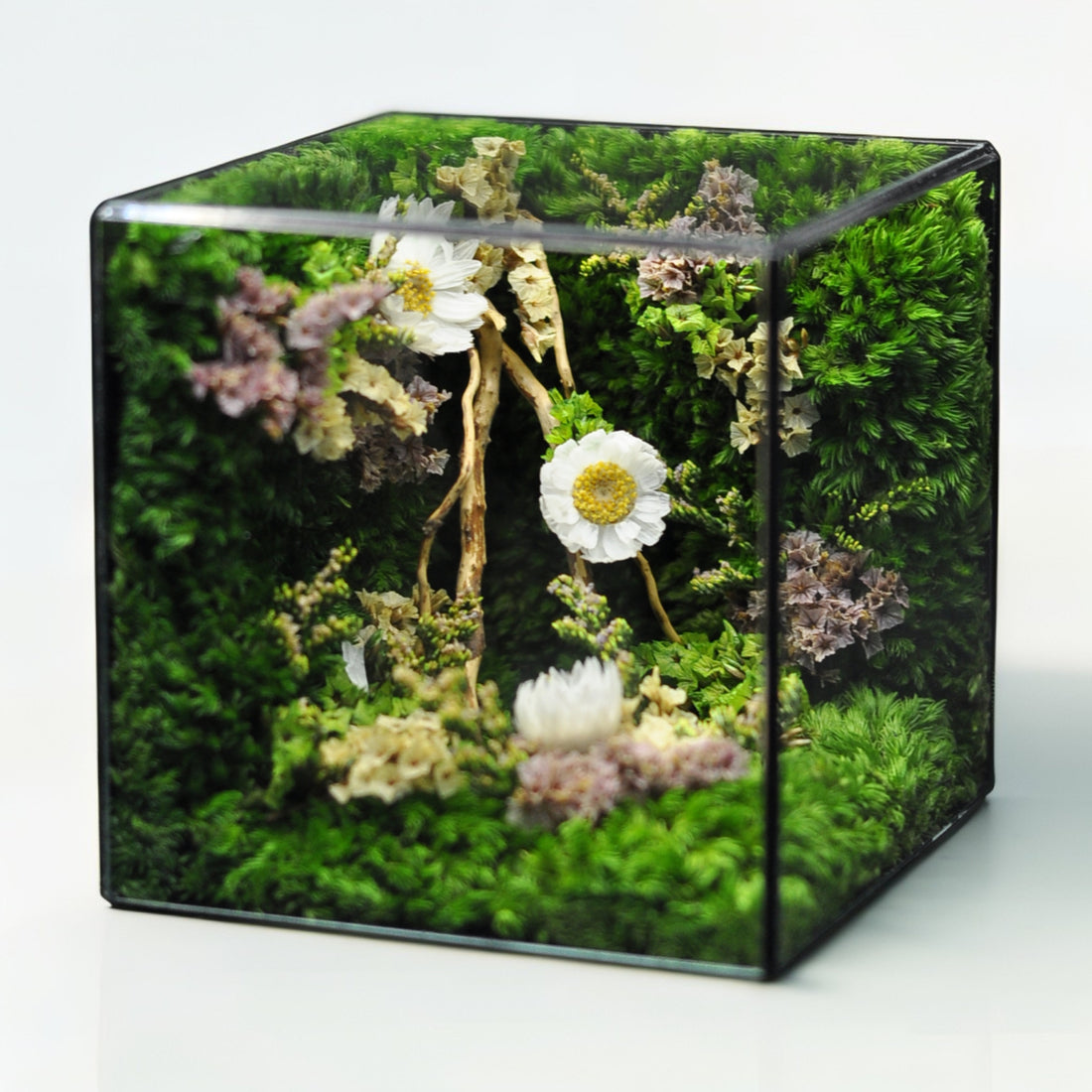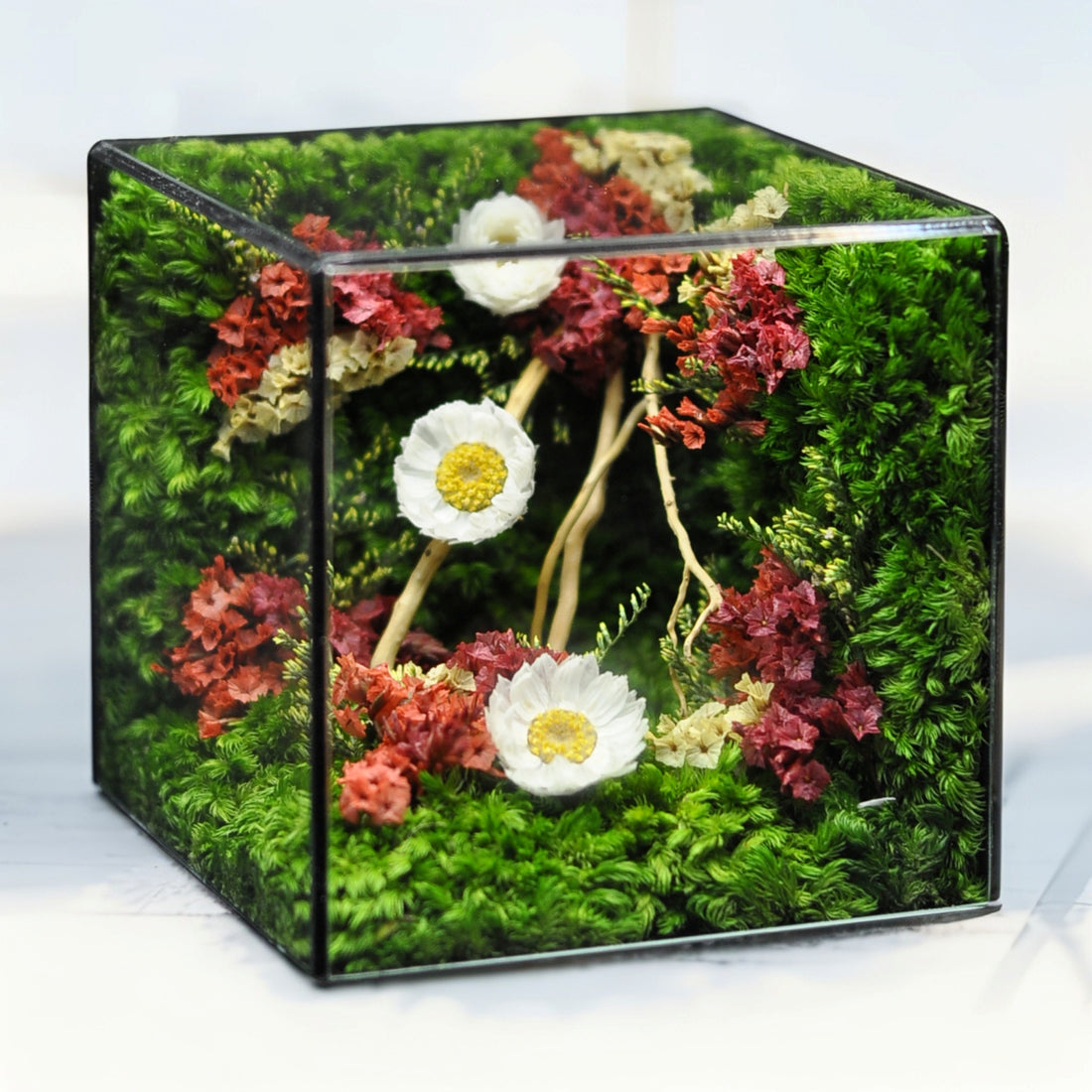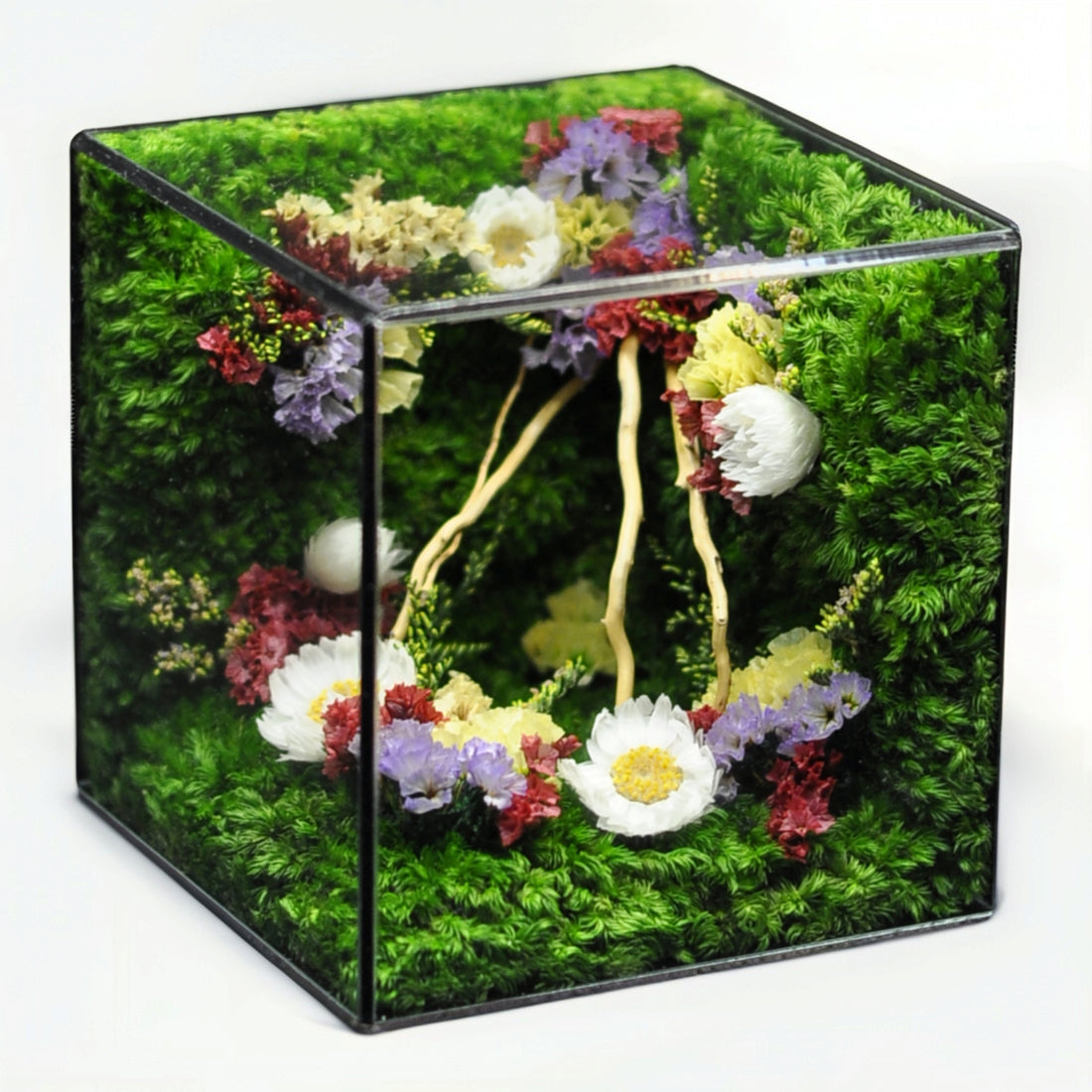Key Takeaways
Preserved flowers offer a stunning, long-lasting alternative to fresh blooms, but understanding their true lifespan requires looking beyond general estimates to the factors that influence their durability. Here are the key takeaways about how long preserved flowers last and how to maximize their beauty.
- Expect years, not days, from preserved blooms: Preserved flowers offer significantly extended beauty compared to fresh cuts, typically lasting from 1 to 3 years, often even longer under ideal conditions.
- The right method dictates lasting beauty: The specific preservation technique used—such as silica gel drying, glycerin treatment, or resin encapsulation—profoundly impacts the final look, feel, and longevity of the flower.
- Control climate for maximum longevity: Protecting preserved flowers from high humidity (the biggest enemy), direct sunlight (which causes fading), and extreme temperature fluctuations is vital for extending their life and maintaining their appearance.
- Effortless care keeps them vibrant: Unlike fresh flowers, preserved blooms require no water; simple, gentle dusting is usually sufficient to maintain their look and prevent dust buildup.
- Choose wisely by comparing methods head-to-head: Understanding the specific benefits and outcomes of different processes, like which method best retains color or structure, helps you select the ideal preserved flower based on your desired lifespan and aesthetic.
Introduction
How long do preserved flowers last? If you’ve ever searched “how long does preserved flowers last,” you’ll discover that these arrangements can stay vibrant for 1 to 3 years—or sometimes even longer—far surpassing the fleeting days of fresh blooms.
The secret lies in the chosen preservation method—whether silica gel drying, glycerin treatment, or resin encapsulation—each shaping your flowers’ texture and lifespan. Pair these techniques with protection from high humidity, direct sunlight, and temperature swings, and a simple dusting routine replaces the need for watering.
Let’s dive into the preservation methods, environmental challenges, and effortless care tips that will help you extend preserved flowers’ life and enjoy their lasting beauty.
1. Typical Lifespan of Preserved Flowers
1.1 Expect Years, Not Days: Preserved Flower Lifespan
If you’ve ever wondered “how long does preserved flowers last,” you’ll be pleased to know that most preserved arrangements retain their beauty for 1–3 years under normal indoor conditions. With diligent care—stable humidity, indirect lighting, gentle handling—you can often extend that to 4–5 years or more. [Source: Society of American Florists]
1.2 Why Preservation Methods Matter
The technique you choose directly influences color retention, texture, and overall longevity. Methods that lock out moisture while maintaining petal structure generally yield a longer lifespan than simple air-drying. According to AIFD guidelines, the degree of moisture replacement and barrier formation determines how well pigments and cellular structures remain intact over time. [Source: AIFD 2020]
2. Flower Preservation Methods: Pros, Cons & Lifespan
2.1 Silica Gel Preservation
Silica gel preservation uses porous silicon dioxide beads to draw out moisture while preserving shape and color.
Process Steps:
- Select 2–4 mm non-caking, color-indicating silica beads.
- Pour a 1–2 cm bed of gel into an airtight container.
- Nestle blossoms face-up, cover fully with beads, seal.
- Dry 2–7 days, checking bead color change for moisture indicators.
- Regenerate spent silica at 120 °C for 2 hours.
Visual cues of completion include firmer petals and stable bead color.
Typical Lifespan: 1–2 years
Benefits: Excellent color fidelity and structural integrity; low material cost (≈ $5–$15 per arrangement).
Drawbacks: Petals become fragile; slight color fade over time.
2.2 Glycerin-Treated Flowers
Glycerin infusion replaces a flower’s natural water content with a glycerin-water solution, yielding supple stems and leaves.
Key Details:
- Prepare a bath of 1 part glycerin to 2 parts warm water (≈ 40 °C).
- Trim stems, remove lower foliage; submerge stems for 2–3 weeks.
- Look for translucent leaves and flexible stems as infusion confirms.
Typical Lifespan: 2–5 years
Benefits: Soft, life-like texture; durable to the touch.
Drawbacks: Darkens some blooms; longer process; material cost ≈ $10–$25 per bouquet.
2.3 Resin Encapsulation
Embedding flowers in clear epoxy resin creates a permanent, moisture-proof keepsake.
Overview:
- Mix resin and hardener per manufacturer instructions.
- Pour a base layer in a mold, position blooms, then seal with topcoat.
- Cure 24–72 hours in a dust-free environment.
Typical Lifespan: Decades–indefinite*
Benefits: Glossy, museum-quality finish; complete protection against moisture and wear.
Caveats: Irreversible; higher cost ($50–$200+ per piece); epoxy may yellow or develop micro-cracks under prolonged UV exposure.
*Use UV-inhibitor resins to delay yellowing.
2.4 Comparing Methods: Preserved Flower Lifespan
To help you choose, here’s a side-by-side look at each method’s durability, cost, and appearance:
| Method | Average Lifespan | Approximate Cost | Appearance ||---------------------|----------------------|------------------------|-----------------------------------------|| Silica Gel | 1–2 years | $5–$15 per arrangement | High color fidelity; natural form || Glycerin Treatment | 2–5 years | $10–$25 per bouquet | Soft, supple texture; darker hues || Resin Encapsulation | Decades–indefinite* | $50–$200+ per keepsake | Glossy, museum-quality finish |
*Epoxy may yellow or crack under UV exposure over many years.
3. Environmental Factors Affecting Longevity
3.1 Humidity Effects on Flowers
High relative humidity reactivates residual moisture, leading to mold or petal collapse. Aim for 40–50% RH, checked with a hygrometer or digital monitor. [Source: AIFD guidelines]
3.2 Sunlight & UV Exposure
Ultraviolet radiation breaks down pigments, causing fade. Display preserved arrangements away from direct sunlight or behind UV-filtering glass.
3.3 Temperature Fluctuations
Rapid shifts between heat and cold can cause cellular contraction, brittleness, or accelerated glycerin breakdown. Maintain indoor temperatures between 18–22 °C.
3.4 Ideal Conditions for Preserved Flowers
Creating the ideal conditions for preserved flowers combines humidity, light, and temperature control:
- Use airtight display cases or glass domes with silica gel packets.
- Store in cool, dark locations with stable 18–22 °C and 40–50% RH.
- Wrap arrangements in acid-free tissue for long-term storage.
4. Longevity by Flower Type
4.1 Preserved Roses Lifespan Comparison
Preserved roses withstand the test of time better than many blooms:
- Silica Gel Roses: 1–2 years
- Glycerin Roses: 2–5 years
- Resin-Encapsulated Roses: Decades
4.2 Other Popular Varieties
- Hydrangeas: 1–2 years (silica), 3–5 years (glycerin)
- Baby’s Breath: 6–12 months (silica), 2–3 years (glycerin)
- Eucalyptus: 2–5 years (glycerin), 5+ years in resin
4.3 Choosing Flowers Based on Desired Lifespan
Flower Picker’s Checklist:
• Desired longevity (months vs. years)
• Color intensity and hue stability
• Texture: rigid vs. pliable stems
• Care level you can maintain
• Budget per arrangement
“Preserved eucalyptus wall art has held up flawlessly for over two years in my living room,” says interior designer Maria Lopez.
5. Care & Maintenance: Extend Preserved Flowers Life
5.1 Do Preserved Flowers Need Water?
Ever tried watering a preserved bouquet by mistake? Introducing moisture can reverse glycerin infusion or rehydrate silica, leading to mold and petal collapse.
5.2 Gentle Dusting & Cleaning
Use a soft artist’s brush or low-pressure air duster to remove dust. Never apply water or cleaning solutions that could dissolve preservation agents. Pro Tip: dust weekly to prevent buildup.
5.3 Handling & Display Tips
• Avoid touching petals—wear clean cotton gloves if needed.
• Position bouquets in wide-mouth vases or secure bases to maintain shape.
• Keep away from HVAC vents, radiators, and direct heat sources.
5.4 Preventative Measures Against Mold & Pests
• Inspect arrangements monthly for early mold spots—gently blow away spores with compressed air.
• Check for spider mites or other pests; use a dry paintbrush to remove insects.
• Troubleshooting: slightly curled petals? Lightly mist with 90% isopropyl alcohol and allow to air dry.
6. Choosing the Best Method & Flowers for You
6.1 What Is the Best Method to Preserve Flowers?
Balancing cost, appearance, and lifespan is key.
Which Method Suits You?
• DIY Budget: Silica Gel – Low cost; ideal for hobbyists.
• Soft, Durable Texture: Glycerin – Mid-range cost; handles well.
• Heirloom Keepsake: Resin – Premium cost; decades-long display.
Example: A boutique florist reduced weekly floral waste by 30% and saved an estimated $4,500 annually using optimized silica gel processes.*
*Based on internal client data.
6.2 How to Make Preserved Flowers Last Longer
Combine your chosen method with climate control and regular care:
- Maintain 40–50% RH and 18–22 °C.
- Display away from direct sunlight.
- Dust gently each week.
- Store in airtight cases with desiccants when not on display.
In one Chicago office lobby, glycerin-treated flowers remained vibrant for over three years, boosting guest engagement by 15%.*
6.3 Buying vs. DIY Preservation
DIY Pros & Cons:
• Pros: Lower material cost; creative control; accessible for silica and glycerin treatments.
• Cons: No freeze-drying equipment ($5,000+); results vary.
Professional Pros & Cons:
• Pros: Access to freeze-drying, resin-encapsulation; expert finish; warranties.
• Cons: Higher fees ($50–$200+ per arrangement); lead times.
Wedding specialist Blissful Moments Weddings introduced resin-encapsulated bouquets and saw a 12% increase in repeat bookings in the first year.*
*Results may vary based on scale and bouquet type.
Conclusion
Preserved flowers transform ephemeral blooms into lasting statements, with methods ranging from budget-friendly silica gel (1–2 years) to glycerin infusion (2–5 years) or resin encapsulation (decades). Success hinges on matching your desired lifespan, texture, and budget to the right technique—and maintaining 40–50% humidity, 18–22 °C temperatures, and minimal UV exposure. Gentle dusting, careful handling, and airtight displays protect arrangements from mold and brittleness. Whether you’re a DIY enthusiast or opting for professional freeze-drying, understanding these factors ensures your floral keepsakes retain their vibrancy. Now, choose your preservation path: which flowers will you immortalize, and how will you curate them to reflect your personal style forever?
Frequently Asked Questions (FAQ)
Q: How long do preserved flowers typically last?
A: Most preserved arrangements retain their beauty for 1–3 years under normal indoor conditions. With stable humidity, indirect lighting, and gentle handling, you can often extend their lifespan to 4–5 years or more.
Q: Do preserved flowers need water?
A: No. Introducing moisture can reverse glycerin infusion or rehydrate silica, which leads to mold growth or petal collapse.
Q: How should preserved flowers be stored?
A: Store them in airtight display cases or glass domes with silica gel packets. Keep them in cool, dark locations at 18–22 °C and 40–50% relative humidity, and wrap arrangements in acid-free tissue for long-term storage.
Q: What are the main preservation methods and how long does each last?
A:
- Silica Gel: 1–2 years; high color fidelity; low cost ($5–$15).
- Glycerin Treatment: 2–5 years; soft, life-like texture; mid cost ($10–$25).
- Resin Encapsulation: decades–indefinite; glossy, museum-quality finish; higher cost ($50–$200+).
Q: What environmental conditions affect the longevity of preserved flowers?
A:
- Humidity: Aim for 40–50% RH to prevent mold or petal collapse.
- Light: Keep away from direct sunlight or use UV-filtering glass to avoid pigment fade.
- Temperature: Maintain a stable 18–22 °C to prevent brittleness and glycerin breakdown.
Q: How can I extend the lifespan of preserved flowers?
A: Combine your chosen preservation method with controlled conditions—40–50% RH, 18–22 °C, and no direct sunlight—dust gently each week, store unused arrangements in airtight cases with desiccants, and handle blooms with clean gloves.
Q: What is the best method to preserve flowers?
A: It depends on your priorities. For a DIY budget use silica gel; for a soft, durable texture choose glycerin; for a decades-long keepsake opt for resin encapsulation.

